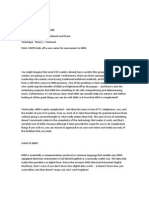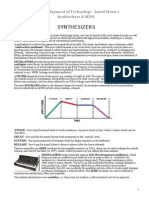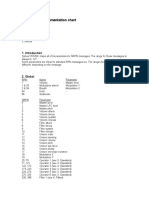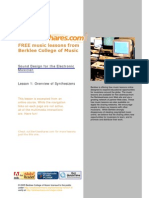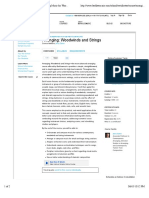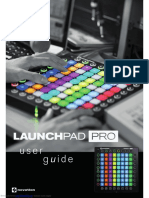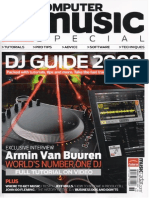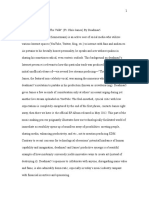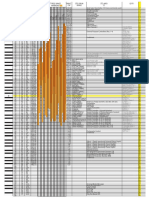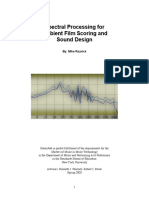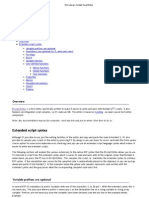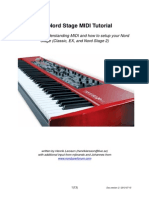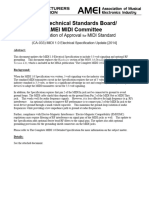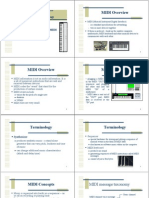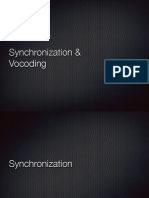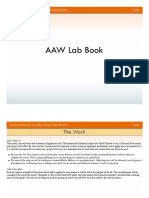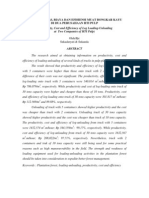100% found this document useful (1 vote)
131 views46 pagesLecture 2 - MIDI Basics
The document provides information about the MIDI specification including:
- MIDI was introduced in 1983 and standardized digital communication between synthesizers from different manufacturers.
- Organizations like the MMA and JMSC define MIDI specifications and standards to ensure compatibility.
- MIDI transmits performance data but not audio via a serial protocol over 5-pin DIN cables with a maximum length of 50 feet.
- Devices can be connected in basic or daisy chain configurations with masters transmitting to slaves.
Uploaded by
Andres F. SaavedraCopyright
© © All Rights Reserved
We take content rights seriously. If you suspect this is your content, claim it here.
Available Formats
Download as PDF, TXT or read online on Scribd
100% found this document useful (1 vote)
131 views46 pagesLecture 2 - MIDI Basics
The document provides information about the MIDI specification including:
- MIDI was introduced in 1983 and standardized digital communication between synthesizers from different manufacturers.
- Organizations like the MMA and JMSC define MIDI specifications and standards to ensure compatibility.
- MIDI transmits performance data but not audio via a serial protocol over 5-pin DIN cables with a maximum length of 50 feet.
- Devices can be connected in basic or daisy chain configurations with masters transmitting to slaves.
Uploaded by
Andres F. SaavedraCopyright
© © All Rights Reserved
We take content rights seriously. If you suspect this is your content, claim it here.
Available Formats
Download as PDF, TXT or read online on Scribd
/ 46

